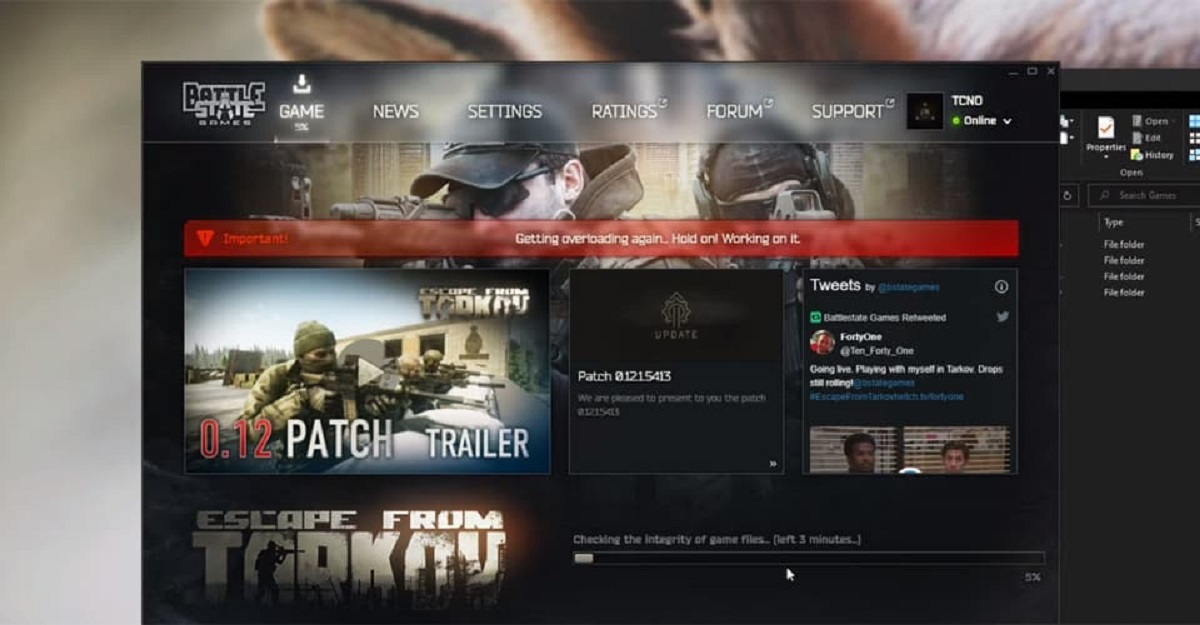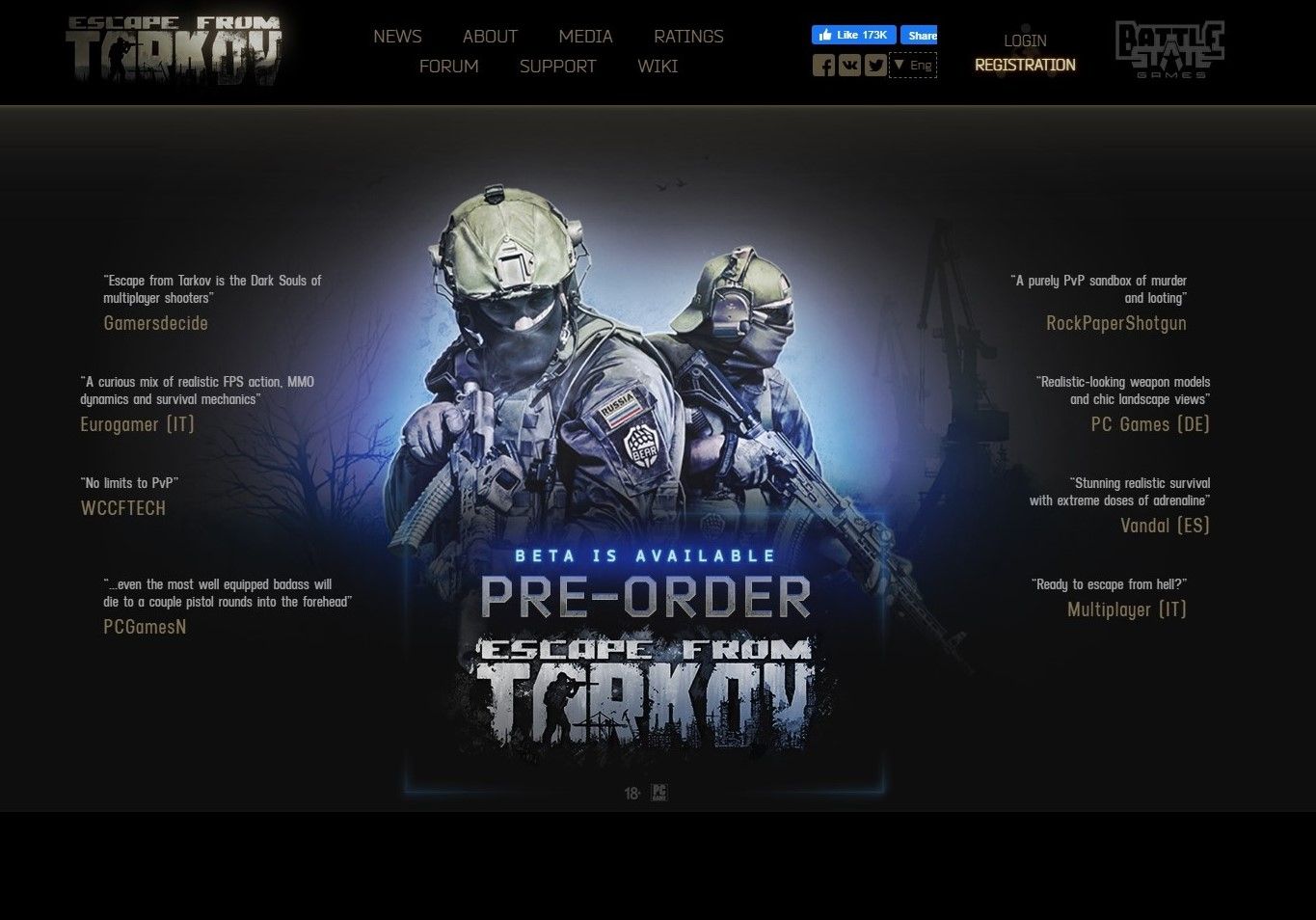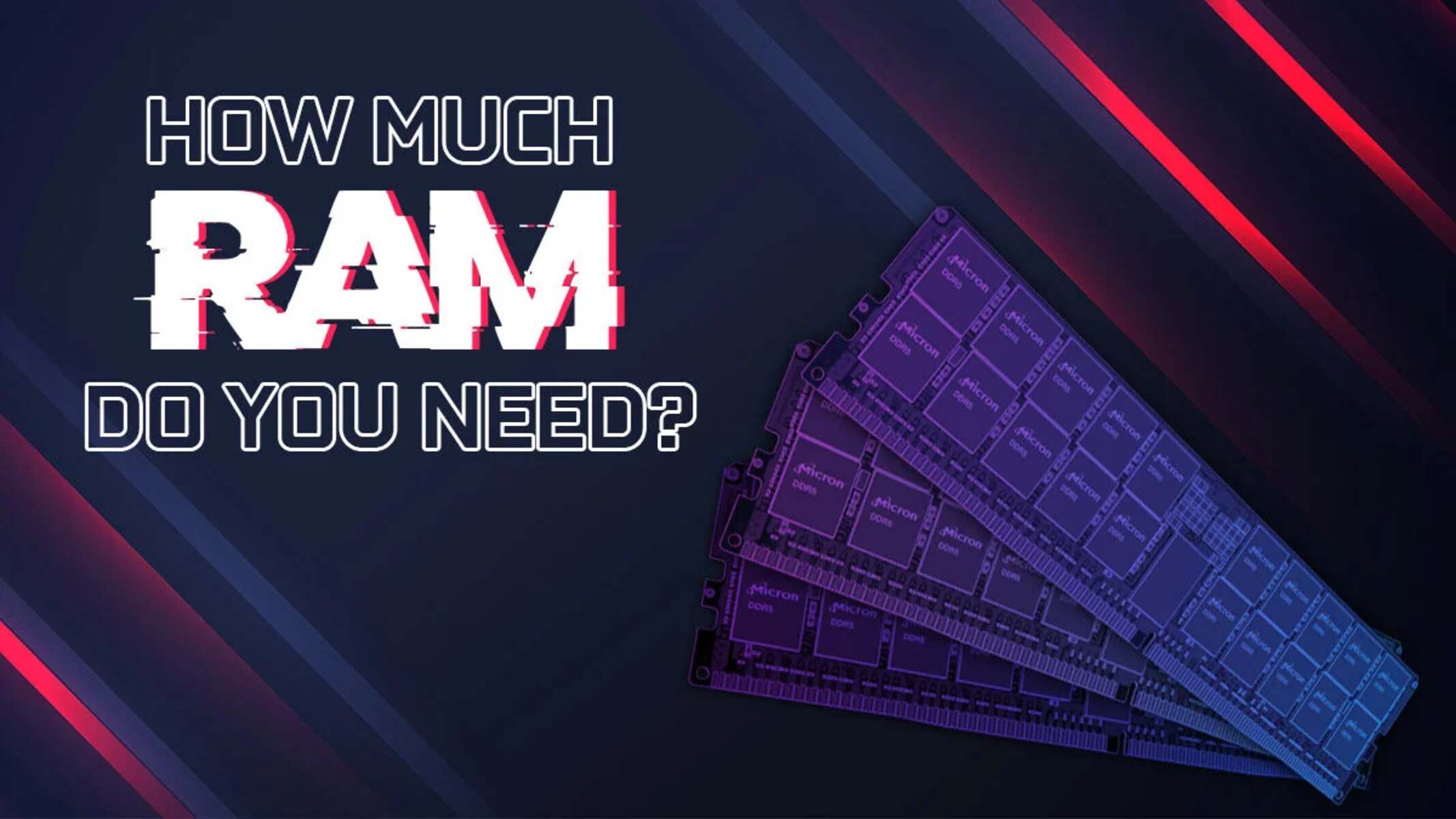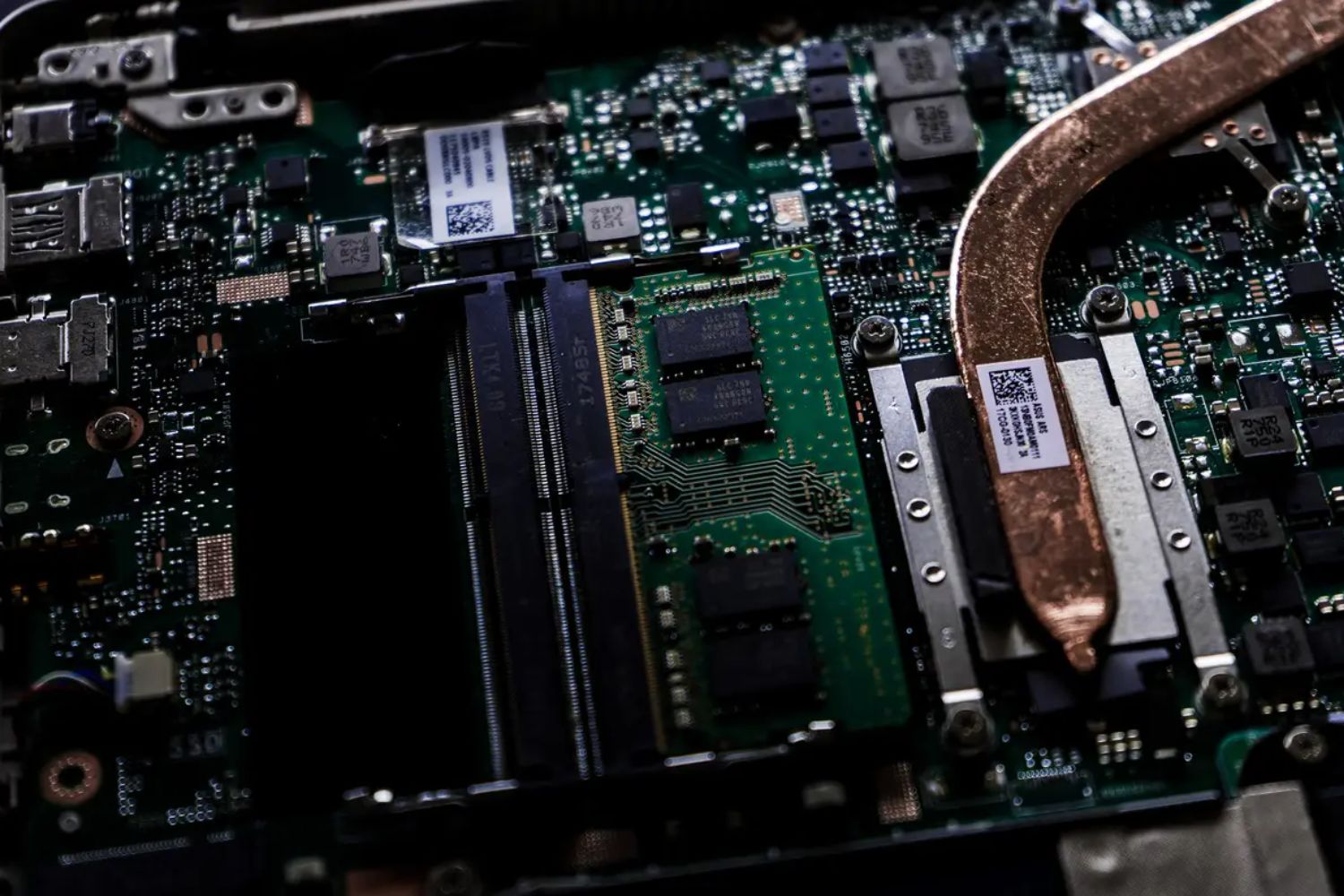Minimum System Requirements for Tarkov
Are you a fan of the popular first-person shooter game, Escape from Tarkov? If so, you might be wondering what are the minimum system requirements to run the game smoothly. In this section, we will explore the specifications necessary to play Tarkov without any major performance issues.
Before diving into the specific requirements, it’s important to note that Tarkov is a graphically intensive game that demands substantial computing power. Therefore, meeting the minimum system requirements is crucial to ensure a seamless gaming experience.
Operating System: Tarkov is compatible with Windows 7/8/10 (64-bit). It is advisable to have the latest updates installed to optimize performance and stability.
Processor: The game requires at least an Intel Core 2 Duo, AMD Athlon x2, or equivalent CPU. However, it is recommended to have a more powerful processor such as an Intel i5 or AMD Ryzen 5 for better performance.
Memory (RAM): To run Tarkov, a minimum of 8GB of RAM is required. This amount of RAM will allow the game to run smoothly, but you may experience occasional slowdowns or frame rate drops in graphically demanding situations.
Graphics Card: Tarkov’s graphics are one of the game’s major highlights. It is recommended to have a dedicated graphics card with at least 2GB of VRAM to handle the game’s visual effects. Nvidia GeForce GTX 660 or AMD Radeon HD 7870 are the minimum recommended graphics cards.
Storage: Tarkov requires around 12GB of free storage space to install the game and additional space for future updates. It is advisable to have a solid-state drive (SSD) to ensure faster loading times and smoother gameplay.
Internet Connection: A stable broadband internet connection is essential for online multiplayer games like Tarkov. The minimum recommended speed is 10 Mbps, but a faster connection will provide a more enjoyable gaming experience, especially during intense firefights.
Meeting these minimum system requirements will allow you to launch Tarkov and play the game. However, to fully enjoy the immersive gameplay experience without performance hiccups and stutters, it is strongly recommended to have a system that exceeds these minimum requirements.
Now that we’ve covered the minimum system requirements, let’s move on to the recommended system specifications for Tarkov.
Recommended RAM for Tarkov
When it comes to playing Escape from Tarkov, having enough RAM is crucial for smooth gameplay and optimal performance. While the minimum requirement for RAM is 8GB, it is highly recommended to have more RAM to ensure a seamless gaming experience.
So, how much RAM is recommended for Tarkov? Well, to fully enjoy the game without any frustrating lag or slowdowns, a minimum of 16GB of RAM is highly recommended. This amount of RAM will allow the game to run smoothly, even in intense and action-packed scenarios.
Escape from Tarkov is a visually stunning game with detailed environments, realistic lighting effects, and intricate textures. These elements require a significant amount of memory to render smoothly. With 16GB of RAM, Tarkov will be able to take full advantage of your system’s resources, resulting in faster loading times, improved texture streaming, and enhanced overall performance.
Furthermore, having more RAM allows the game to utilize a larger portion of your system’s memory, reducing the reliance on virtual memory (page file). When the game exceeds the available physical RAM, it temporarily stores data on the page file, which is located on your hard drive or SSD. However, accessing data from the page file can be slower than retrieving it directly from RAM, resulting in performance delays.
Moreover, having higher amounts of RAM can provide headroom for running other applications simultaneously. This is especially important if you like to have a web browser open, stream your gameplay, or use voice chat programs while playing Tarkov. With 16GB of RAM or more, you can ensure a smooth gaming experience while multitasking.
In summary, while the minimum requirement for Tarkov is 8GB of RAM, it is highly recommended to have at least 16GB of RAM for optimal performance. This will allow the game to run smoothly, reduce reliance on virtual memory, and provide headroom for multitasking without any performance compromises.
Now that we know the recommended RAM for playing Tarkov, let’s explore how much memory the game actually uses in practice.
How Much RAM Does Tarkov Use?
Understanding how much RAM Escape from Tarkov uses can help you determine if your current system configuration is sufficient or if you need to upgrade your memory capacity. Tarkov’s RAM usage can vary depending on factors such as the map being played, the number of players in the session, and the graphical settings selected.
On average, Tarkov typically uses around 9-12GB of RAM during gameplay. However, keep in mind that this number can increase during intense firefights or when exploring densely detailed areas. In some instances, it is not uncommon to see Tarkov’s RAM usage exceed 12GB, particularly when playing on larger maps with higher graphical settings.
One important factor to consider is your system’s overall memory capacity. If you have only 8GB of RAM, Tarkov may experience occasional slowdowns or frame rate drops when the game exceeds the available physical memory and starts utilizing virtual memory (page file). This is because accessing data from the page file is slower than retrieving it directly from RAM.
However, if you have 16GB or more of RAM, Tarkov should have enough memory to run smoothly and minimize reliance on virtual memory. This can result in faster loading times, better texture streaming, and improved overall performance.
To check how much RAM Tarkov is using on your system, you can open the Task Manager (Ctrl+Shift+Esc) and go to the “Performance” tab. From there, click on “Memory” on the left sidebar to see the current RAM usage. This can give you a real-time indication of how much memory Tarkov is consuming while you play.
It’s worth noting that Tarkov’s RAM usage may vary from player to player, depending on individual system configurations and in-game settings. This is why having more RAM than the minimum requirement is beneficial, as it provides headroom for the game’s memory demands and ensures a smoother gaming experience.
In the next section, we will explore some factors that can affect Tarkov’s RAM usage and provide tips to help optimize your system’s performance.
Factors Affecting Tarkov’s RAM Usage
Escape from Tarkov’s RAM usage can be influenced by several factors, which can vary from player to player depending on individual system configurations and in-game settings. Understanding these factors can help you optimize your system’s performance and ensure a smooth gaming experience. Let’s take a closer look at the key factors affecting Tarkov’s RAM usage:
Map Size and Complexity: Tarkov features a variety of maps, ranging from small, confined areas to large, open-world environments. The size and complexity of the map being played can impact the amount of RAM required. Larger maps with intricate details and dynamic elements tend to have higher RAM usage compared to smaller, less detailed maps.
Number of Players: The number of players in a Tarkov session can significantly impact RAM usage. More players mean more character models, movement, interactions, and synchronization of data, all of which require extra memory. Engaging in PvP battles or participating in highly populated areas can increase the RAM usage due to the additional calculations and data processing.
Graphical Settings: Adjusting the graphical settings in Tarkov can influence RAM usage. Higher graphical settings, such as higher texture quality, increased draw distance, and more detailed shadows, can require additional memory to render the visuals. Lowering these settings can help reduce RAM usage while sacrificing some visual fidelity.
Background Applications: Running other applications in the background while playing Tarkov can impact RAM availability. Background tasks, such as web browsers, streaming software, or voice chat programs, can consume memory resources. Closing unnecessary applications can free up RAM and allocate more to Tarkov, improving performance.
RAM Speed and Configuration: The speed and configuration of your RAM modules can affect Tarkov’s RAM usage. Faster RAM modules (e.g., DDR4) can provide faster access to data, reducing latency and improving overall performance. Dual-channel or quad-channel memory configurations can also enhance data transfer rates and improve memory bandwidth.
Game Updates and Optimizations: Keep in mind that Tarkov’s RAM usage can be influenced by game updates and optimizations. Developers regularly release patches and updates to address performance issues and enhance the game’s performance. It’s essential to keep your game client up to date to benefit from these optimizations.
By considering these factors, you can make informed adjustments to your system and in-game settings to optimize Tarkov’s RAM usage. This will help ensure smooth gameplay and reduce potential performance issues related to memory limitations.
Now that we’ve covered the key factors affecting Tarkov’s RAM usage, let’s explore the optimal RAM configuration for the game in the next section.
Optimal RAM Configuration for Tarkov
Having the right RAM configuration is crucial for achieving optimal performance in Escape from Tarkov. While the minimum requirement is 8GB, and the recommended amount is 16GB, there are a few additional considerations to keep in mind to ensure the best possible gaming experience.
Capacity: As mentioned earlier, having at least 16GB of RAM is recommended to provide enough memory for Tarkov to run smoothly. However, if you have the budget and want to future-proof your system, consider upgrading to 32GB or even 64GB of RAM. This will provide ample memory for Tarkov and other resource-intensive tasks you may perform simultaneously.
Speed: RAM speed, measured in megahertz (MHz), plays a significant role in system performance. Higher RAM speeds can result in faster data transfer rates and lower latency, which can improve overall gaming performance in Tarkov. Aim for RAM with speeds of at least 3000MHz or higher for optimal results.
Timing: RAM timing refers to the speed it takes for RAM to respond to certain commands. It is represented by a series of numbers, such as 16-18-18-36. Lower timings generally result in faster performance. When selecting RAM modules, aim for lower latency timings, preferably CL16 or lower.
Configuration: To take advantage of dual-channel or quad-channel memory architecture, it is recommended to install multiple identical RAM modules. For example, if your motherboard supports dual-channel memory, install two identical RAM modules to ensure the best performance. Consult your motherboard’s manual for specific instructions regarding RAM configuration.
Compatibility: Ensure that the RAM you choose is compatible with your motherboard’s specifications. Check the motherboard’s user manual or visit the manufacturer’s website for a list of supported RAM modules. Choosing compatible RAM ensures stability and prevents any potential compatibility issues.
Heat Management: RAM modules can generate heat during operation, especially when running resource-intensive programs like Tarkov. To prevent overheating, consider installing RAM modules with heat spreaders or investing in additional cooling solutions for your system, such as case fans or RAM coolers.
Taking these factors into account when configuring your system’s RAM for Tarkov will help you achieve optimal performance. A well-optimized RAM configuration will lead to faster loading times, smoother gameplay, and reduced potential for performance bottlenecks.
In the next section, we’ll provide some valuable tips for improving Tarkov’s RAM performance and overall system optimization.
Tips for Improving Tarkov’s RAM Performance
If you want to enhance Tarkov’s RAM performance and ensure a smooth gaming experience, there are several tips and techniques you can employ. By optimizing your system settings and making necessary adjustments, you can make the most of your available RAM resources. Here are some valuable tips to improve Tarkov’s RAM performance:
Close Unnecessary Applications: Before launching Tarkov, close any unnecessary background applications. This will free up memory resources for the game, allowing it to utilize more RAM and reducing the chance of slowdowns or crashes.
Lower Graphics Settings: Adjusting the graphics settings within Tarkov can help reduce its RAM usage. Lowering texture quality, shadow quality, and other visual effects can relieve the memory burden on your system, allowing for smoother gameplay. Experiment with different settings to find the right balance between visual quality and performance.
Allocate More Virtual Memory: If you have limited physical RAM, you can increase the allocated virtual memory (page file) on your system. This can provide additional memory space for Tarkov and prevent performance issues. However, keep in mind that accessing data from the page file is slower than retrieving it from RAM, so increasing virtual memory should be a last resort.
Disable Unnecessary Background Processes: Disable any unnecessary background processes or services running on your system. These processes can consume valuable system resources, including RAM. Use the Task Manager or a dedicated software program to identify and disable any unnecessary processes that may be running in the background.
Keep Your System Updated: Regularly update your operating system, drivers, and game client to ensure you are running the latest versions. Developers release updates and patches to address performance issues and improve RAM optimization, so staying up to date will ensure you benefit from these improvements.
Perform Regular System Maintenance: Regularly perform system maintenance tasks such as disk cleanup, defragmentation, and clearing temporary files. These actions help optimize your system’s performance and ensure that unnecessary files are not taking up valuable RAM resources.
Monitor RAM Usage: Keep an eye on your system’s RAM usage while playing Tarkov. You can use the Task Manager or specialized monitoring software to track how much RAM the game is utilizing. This will help you identify any potential issues and make necessary adjustments to optimize performance.
By implementing these tips, you can improve Tarkov’s RAM performance and enhance your overall gaming experience. Remember that every system is unique, so it may take some trial and error to find the best settings and configuration for your specific setup.
In the next section, we’ll wrap up our discussion and summarize the key points discussed throughout this article.
Conclusion
In this article, we’ve explored the minimum system requirements, recommended RAM capacity, RAM usage in Escape from Tarkov, factors affecting RAM usage, optimal RAM configuration, and tips for improving Tarkov’s RAM performance. Understanding these aspects is crucial for ensuring a smooth and enjoyable gaming experience.
When it comes to playing Tarkov, having enough RAM is essential. While the minimum requirement is 8GB, it is highly recommended to have at least 16GB of RAM. This will provide enough memory for the game to run smoothly, even in intense and graphically demanding situations.
Tarkov generally uses around 9-12GB of RAM during gameplay, but this can vary depending on factors such as the map size, number of players, and graphical settings. Having more RAM than the minimum requirement allows the game to utilize a larger portion of physical memory, reducing reliance on virtual memory and improving overall performance.
Several factors can influence Tarkov’s RAM usage, including the size and complexity of the map, the number of players in a session, and the graphical settings chosen. It is important to consider these factors and make any necessary adjustments to optimize performance.
When configuring your system’s RAM for Tarkov, aim for a capacity of at least 16GB, with higher speeds and lower latency timings for improved performance. Consider installing multiple identical RAM modules to take advantage of dual-channel or quad-channel memory configurations.
Lastly, we discussed tips for improving Tarkov’s RAM performance, such as closing unnecessary applications, lowering graphics settings, allocating more virtual memory (if necessary), disabling background processes, and keeping your system updated.
Optimizing Tarkov’s RAM usage and performance is crucial for an immersive and enjoyable gameplay experience. By following the recommendations and tips outlined in this article, you can ensure that your system is equipped to handle the demands of Escape from Tarkov and enjoy the thrilling world of Tarkov without compromise.

























